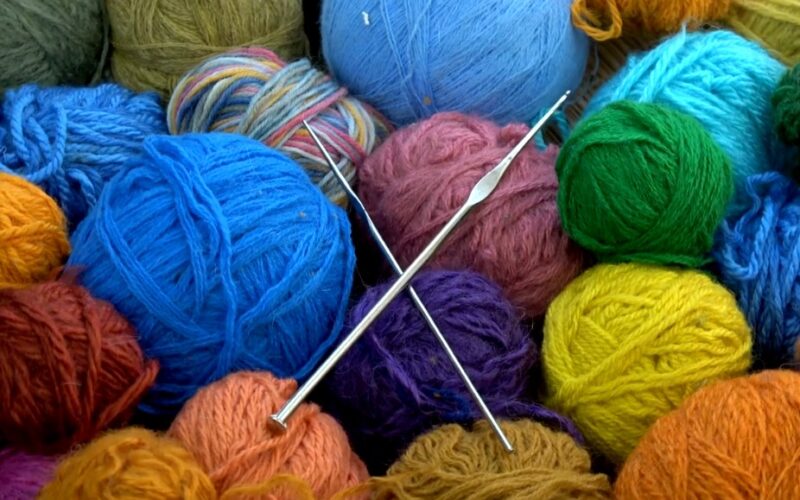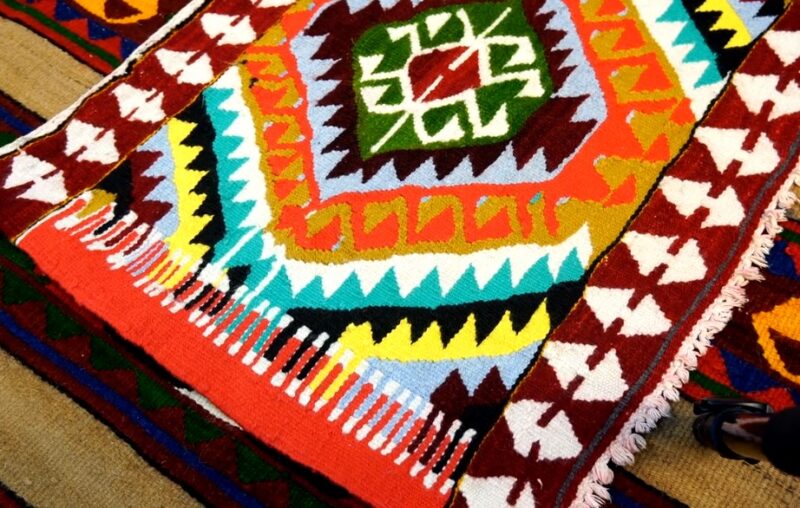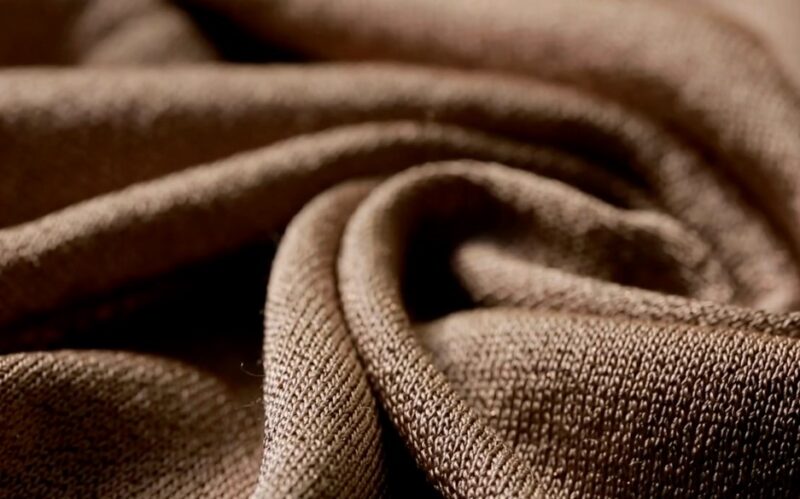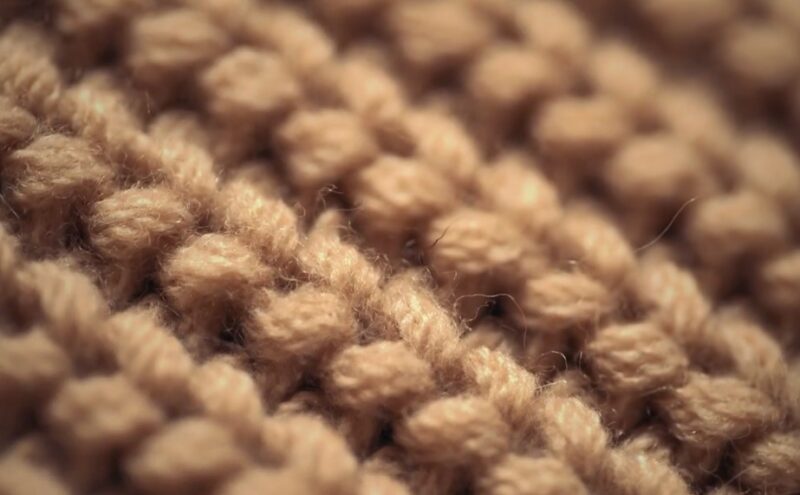Acrylic materials have become widely popular and are extensively utilized in numerous aspects of our daily lives. These materials are composed of fibers that typically contain about 85% acrylonitrile. Initially created in the United States during the 1940s to fulfill the demand for wool, acrylic was further refined in the 1950s and began to be applied in a variety of fields.
Made from a synthetic polymer known as acrylonitrile, acrylic fabric is derived from the chemical reaction of petroleum or coal-derived chemicals with different monomers, indicating that it is a fiber based on fossil fuels.
In contemporary use, acrylic can be found in its pure form as 100% acrylic or blended with other materials and dyed. It has a capacity for holding dye well. Acrylic exhibits characteristics very similar to those of wool in terms of its appearance and functionality.
Acrylic fibers lend a wool-like and cotton-like appearance to fabrics. Garments made from acrylic fabric maintain their shape, resist wrinkling, and are easy to care for. They are also resistant to moths, can be dyed in vivid colors, and are commonly used in the production of socks, fleece, knitwear, sportswear, and children’s clothing.
Acrylic Fabric Properties

Acrylic fabric is a synthetic fiber made from artificial materials. The key characteristics of 100% acrylic items include their lightweight and soft texture, alongside remarkable durability. Garments like sweaters made from acrylic are notably warm and resistant to wrinkling. Acrylic fibers boast excellent resistance to wear and tear, maintaining their vivid and bright colors even after prolonged exposure to sunlight. They also dry quickly.
- It has a soft, cotton-like feel.
- Acrylic is flammable and does not extinguish easily.
- It offers high elasticity.
- The fabric has very low breathability.
- Acrylic is easy to wash and retains its shape even after frequent laundering.
- It demonstrates strong resistance to chemicals and UV radiation.
- The fabric provides a warm and natural feel, similar to wool, yet it is lightweight and warm without causing sweating.
- Its ability to hold stains is very low.
Fabric Uses

Because acrylic fabric is designed to be similar to wool, it is used in many of the same applications as this extremely popular natural fiber. For example, clothing manufacturers create sweaters, gloves, mittens, pants, hoodies, and various other cold weather clothing from acrylic fiber. In addition, acrylic is a popular material for carpets, flooring, rugs and other traditional wool-heavy household items product categories.
Although acrylic is very similar to wool in its natural state, it can be made similarly to other fabrics such as cotton, depending on the machines used.
One of the most obvious applications of acrylic fiber is knitting. While most knitters choose wool for high-quality items, many amateur knitters use acrylic as a cheap fiber or for inexpensive, low-effort projects.
Is Acrylic Fiber Healthy or Not?
Due to its petroleum-based origin, acrylic yarn is not deemed very healthy. Prolonged skin contact should be avoided to prevent potential redness, burning, and itching.
Clothing or carpets made from acrylic are synthetic polymers. Acrylic fabrics’ poor sweat absorption can disrupt the body’s thermal regulation in individuals, particularly those with sensitive skin, leading to increased sweating. This retained moisture can cause flu infections due to the fabric’s inability to properly manage moisture.
Acrylic is not the best choice for children’s clothing due to these reasons. It is more suitable for use in outerwear for children. In adults, extended contact with acrylic can lead to itching, burning, and excessive sweating, which can be uncomfortable.
Therefore, it is often advised to use natural fibers in combination with acrylic, especially on the inner layers of blended fabrics, to mitigate these issues. It’s important to ensure that natural fibers like cotton, wool, and linen are used in greater proportions than acrylic fiber to enhance comfort and healthiness.
What Is Modacrylic?

Modacrylic is a type of acrylic fabric that has a few unique features. Modacrylic stands for “modified acrylic.” Modacrylic has recently been used in clothing as a less expensive alternative to cashmere due to the feel of similar materials.
Modacrylic is resistant to moths, oils and chemicals and is highly resistant to degradation by sunlight. They are flame retardant and do not burn. The fibers are difficult to ignite and are self-extinguishing. In addition to the flame retardant properties of modacrylic, it has a relatively high durability comparable to wool. Modacrylic fibers have moderate resistance to abrasion and very low strength.
Modacrylics are poor conductors of heat. Fabrics are soft, warm and stretchy. Modacrylics are top performers when it comes to appearance retention. The fibers are highly flexible and do not wrinkle. They also have great dimensional stability and high elastic recovery.
FAQ
What is acrylic fabric?
Acrylic fabric is a synthetic fiber made from a polymer called acrylonitrile, which is derived from petroleum or coal-based chemicals. It is known for being lightweight, soft, and durable.
What are the main uses of acrylic fabric?
Acrylic is widely used in the production of sweaters, fleece, knitwear, sportswear, children’s clothing, carpets, rugs, and other household items due to its wool-like properties.
Is acrylic fabric healthy to wear?
Acrylic fabric is not considered very healthy for prolonged skin contact, as it may cause irritation such as redness, burning, and itching, especially in individuals with sensitive skin.
Can acrylic fabric absorb sweat?
No, acrylic fabric has low breathability and does not absorb sweat well, which can disrupt the body’s heat regulation and lead to discomfort.
What is modacrylic?
Modacrylic is a type of modified acrylic fiber known for its flame retardant properties, resistance to chemicals, oils, and sunlight degradation. It is used as a less expensive alternative to cashmere and for its durability and appearance retention.
Are acrylic fabrics flammable?
Yes, acrylic fabrics are flammable but modacrylic fibers are designed to be flame retardant and self-extinguishing.
How should acrylic fabrics be cared for?
Acrylic fabrics are easy to wash and maintain their shape and color after frequent laundering. However, it’s recommended to follow specific care instructions to avoid damage.
Conclusion
Acrylic and modacrylic fabrics offer a range of benefits, including durability, warmth, and versatility in use across various applications from clothing to household items. Despite their synthetic nature and the need for cautious use due to potential skin irritation and flammability concerns, these fabrics remain popular for their wool-like feel and cost-effectiveness.
The use of natural fibers in combination with acrylics is advised to enhance comfort and healthiness, especially in garments in direct contact with the skin. Modacrylics, with their unique flame retardant properties, offer additional options for specific needs, balancing performance with safety.
